Ancient Egypt
1/12
There's no tags or description
Looks like no tags are added yet.
Name | Mastery | Learn | Test | Matching | Spaced |
|---|
No study sessions yet.
13 Terms
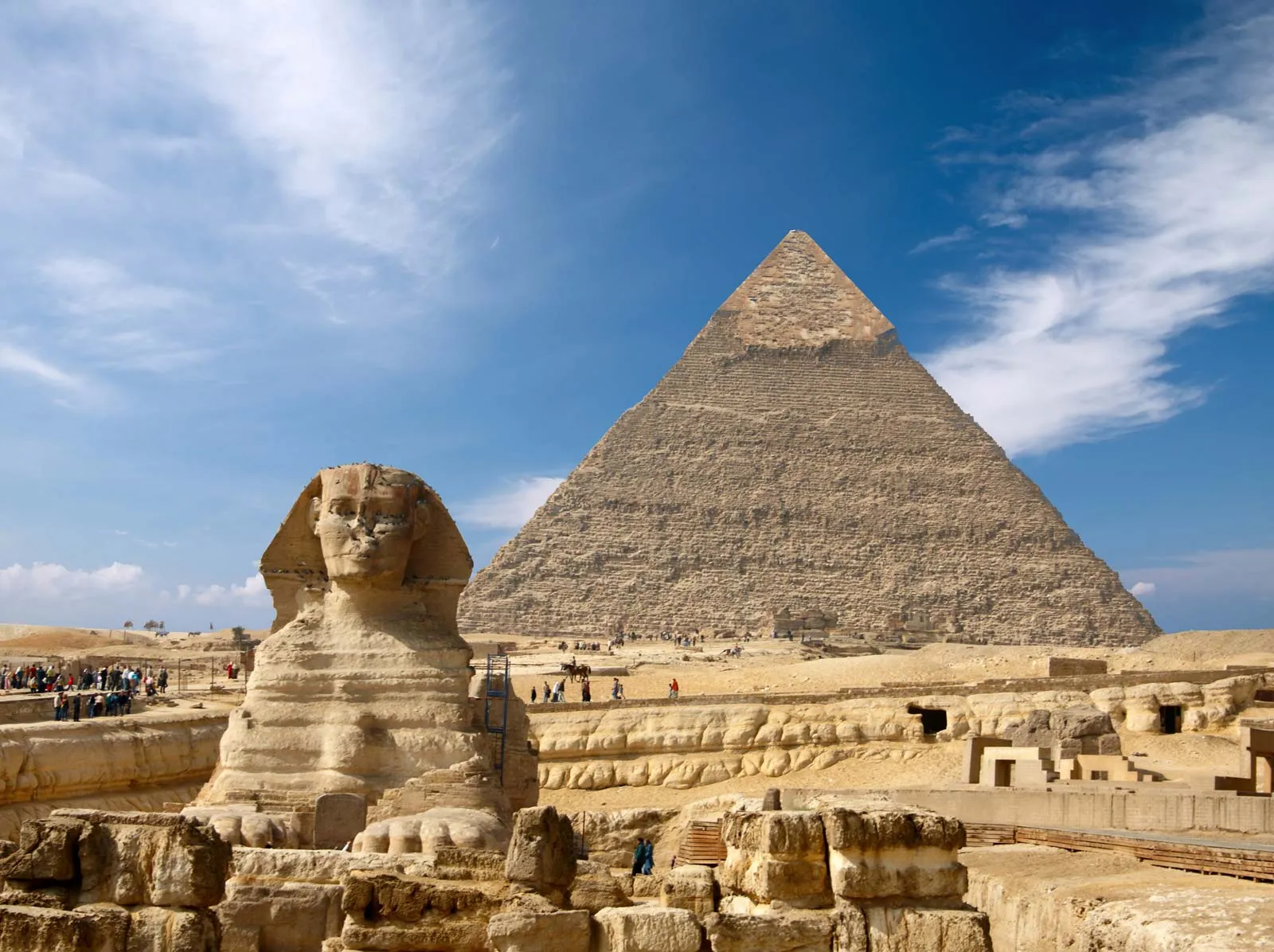
Great Pyramid & Great Sphinx
Pyramid: Tomb for the pharaoh—reflects belief in afterlife and divine kingship.
Sphinx: Guarding the funerary complex of Khafre.
Limestone
Afterlife Beliefs
Egyptians believed in a life after death and buried people with goods.
Tomb Artefacts included luxury items like furniture, jewelry, and models of homes.

Thrones of Tutankhamon and High Class Funerary Objects
Meant to reflect divine protection and royal legitimacy.
Serve the deceased in the afterlife.
Express status, wealth, and divine favor.
Ensure successful journey to and existence in the afterlife.
Wood overlaid with gold leaf, silver, semi-precious stones
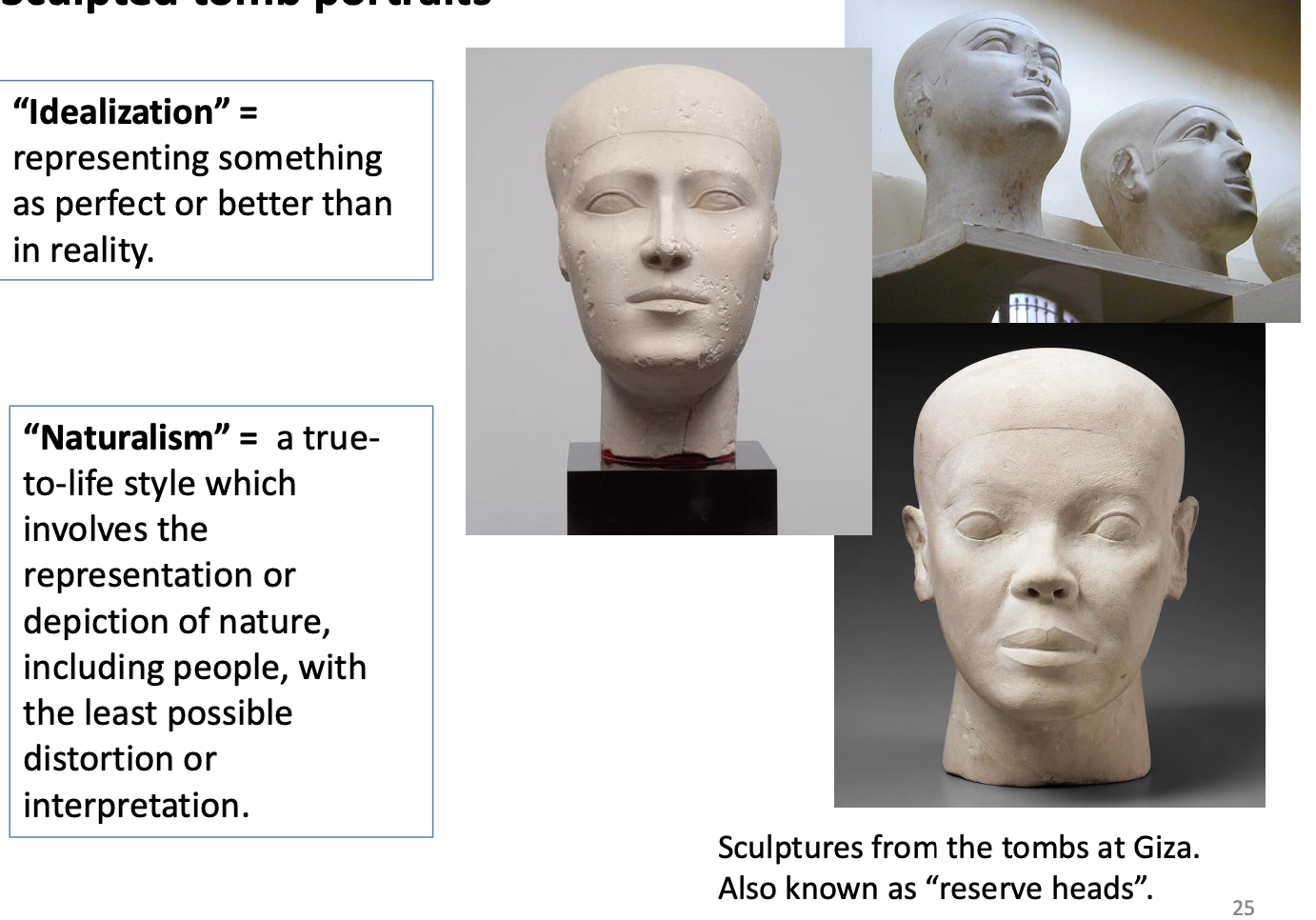
Reserve Heads
Idealized sculpted heads found in tombs; possibly had spiritual function.
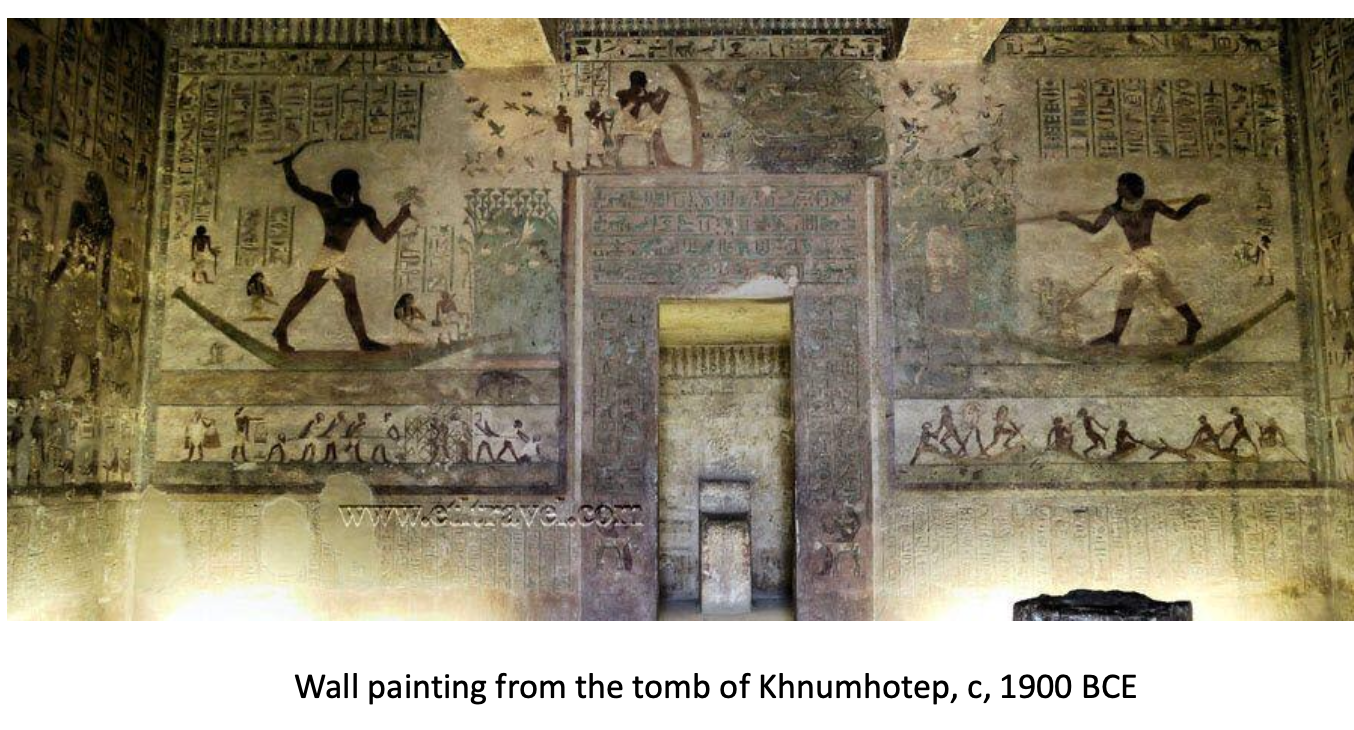
Khnumhotep tomb wall paintings
Show Hieratic Scale
Standarized Poses
Hieroglyphs: a stylized picture of an object representing a word
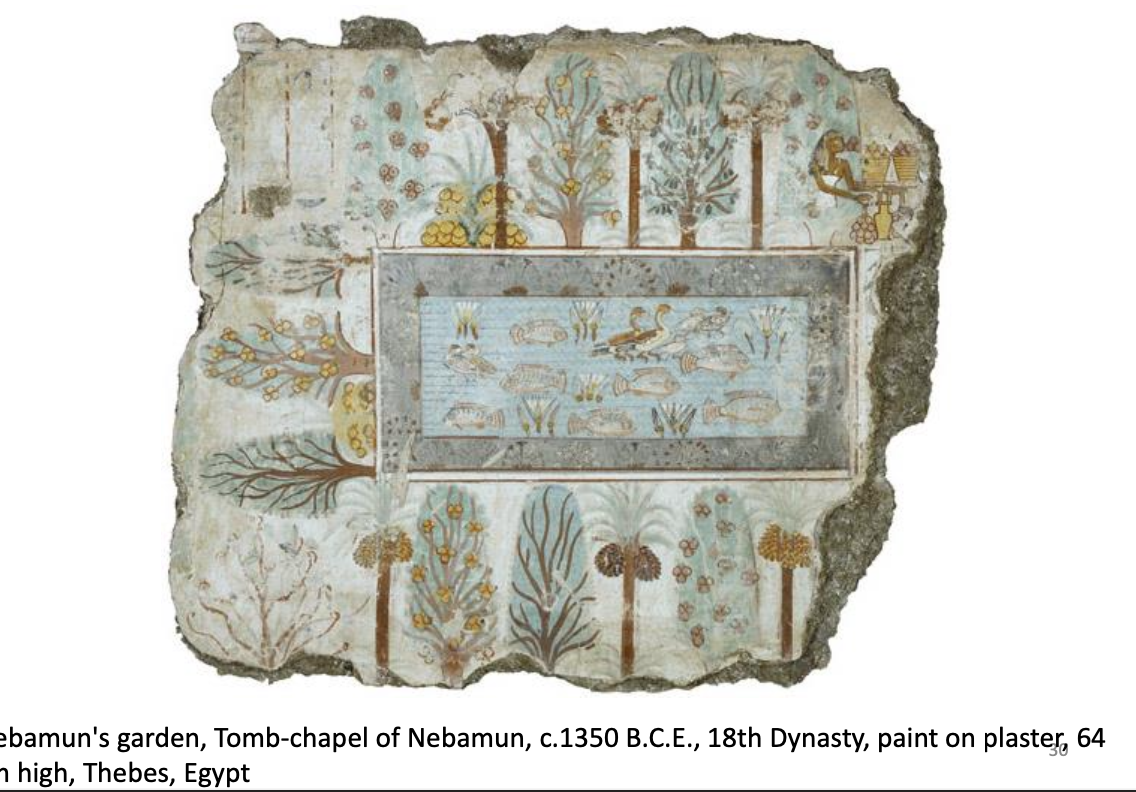
Nebamun's garden wall painting
Depicts a lush, symmetrical garden—idealized nature.
Symbol of eternal paradise in the afterlife.
Features include fish, trees, birds, and pools (symbolizing fertility and order).

Seated scribe
Sculpture in the round: a type of sculpture in which the figures are presented in complete three- dimensional form and are not attached to a flat background.
Realistic body and face, signs of aging
Shows elevated status of scribes, not idealized like kings.
Meant for funerary purpose—to serve the deceased in afterlife.
Painted limestone
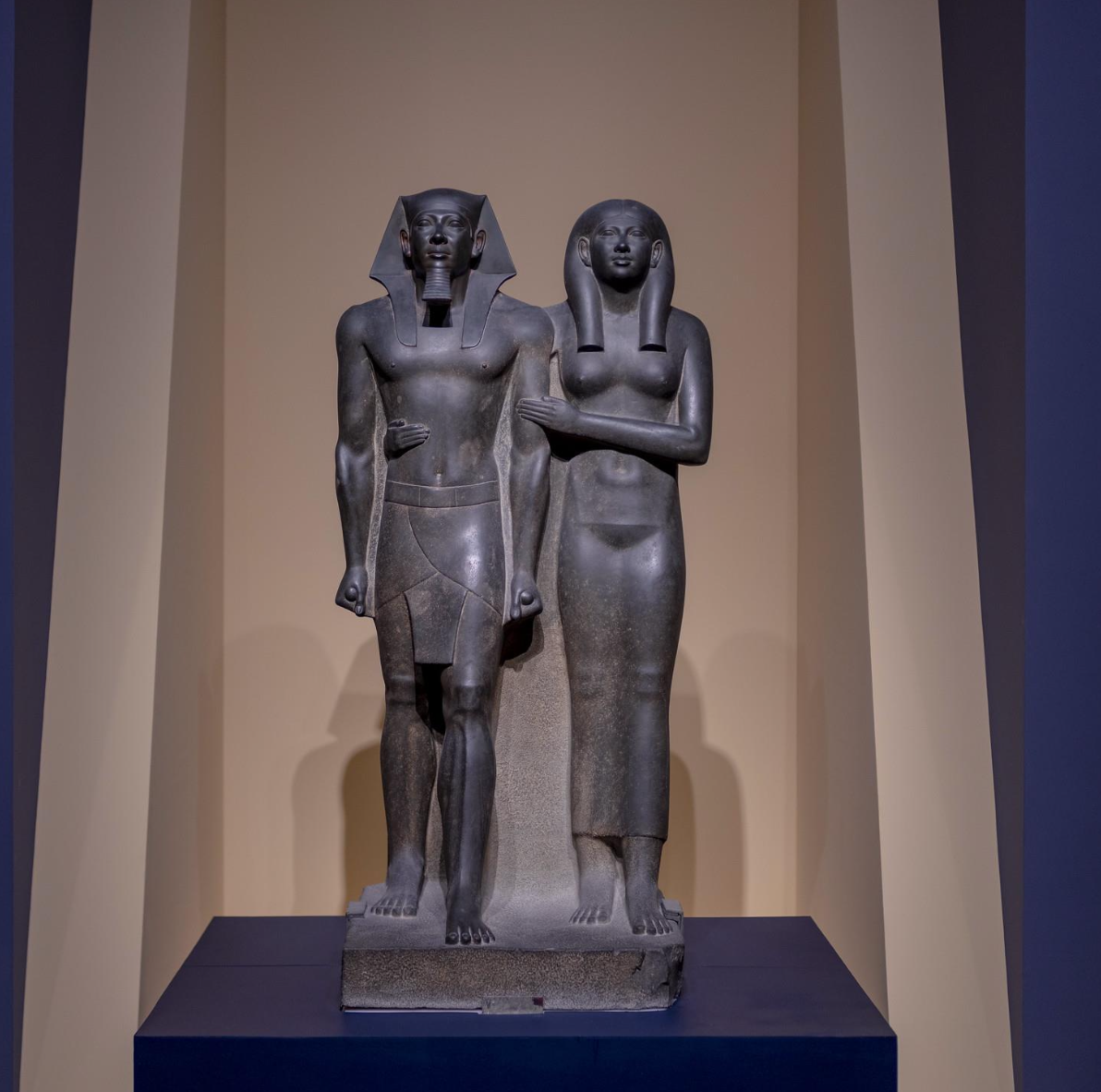
King Menkaure and queen
Stiff frontal pose, idealized bodies.
Shows eternal strength and unity.
Stone sculpture.
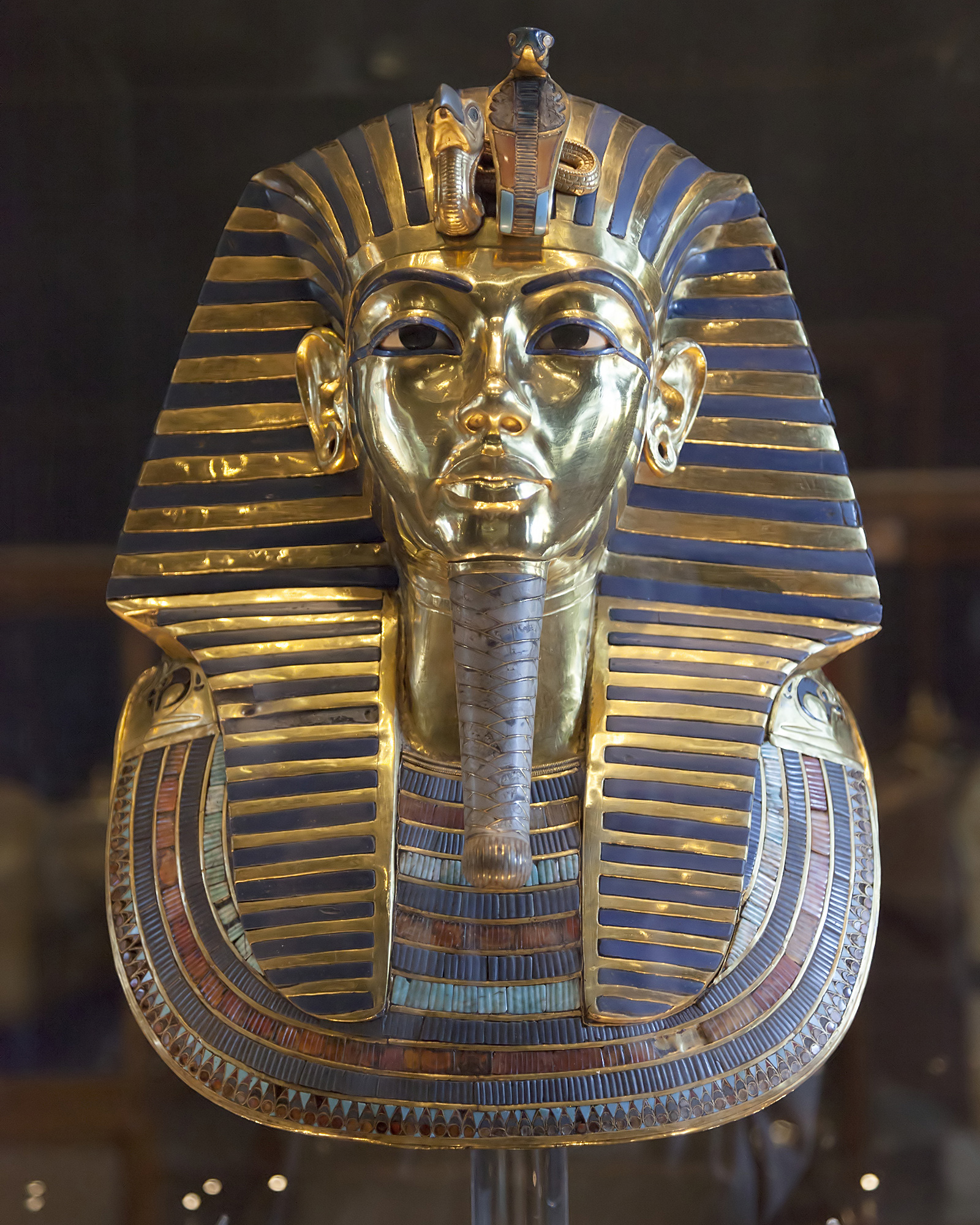
Mask of Tutankhamen
Found in Tutankhamun’s tomb (KV62) in the Valley of the Kings.
Represents the idealized face of the young king.
Symbols of royalty and divinity
Gold inlaid with semi-precious stones.
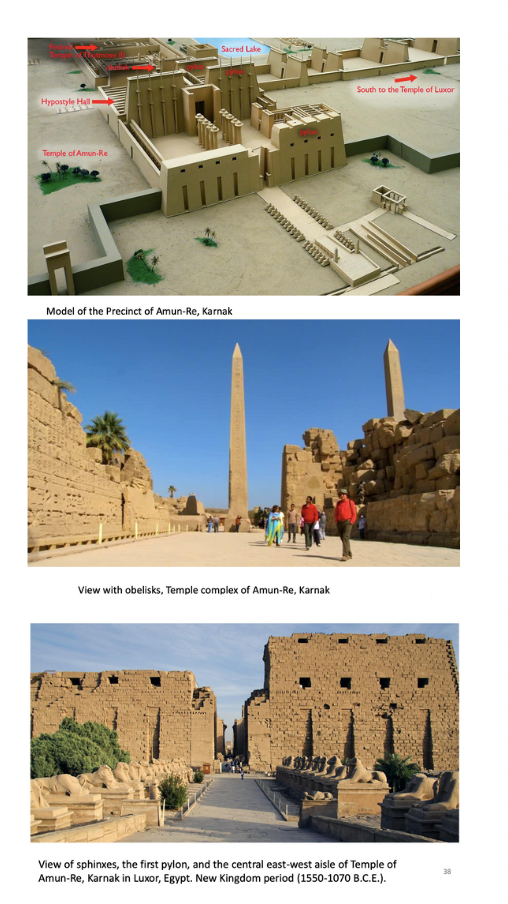
Amun-Re complex at Karnak
Largest religious complex in ancient Egypt
Hypostyle Hall:
Forest of massive columns (134 total).
Filled with hieroglyphic inscriptions.
Obelisks:
Tall, pointed monuments dedicated to Amun, often inscribed.
Festival Temple
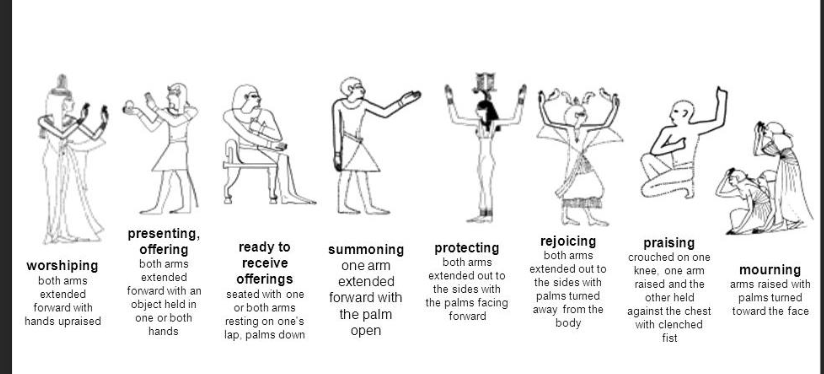
Standardized Poses
Rigid, repeated postures to ensure symbolic meaning.
Idealization
Art that represents people in perfect, idealized form.
Naturalism
A more realistic style, showing physical traits (e.g., Seated Scribe).